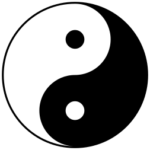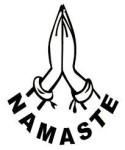THE PRACTICE OF YOGA*
There is no exact definition of Yoga. A practice that has been around for thousands of years, Yoga has evolved from the strictly classical to unrecognizable variations on the yogic theme. To some, Yoga is primarily physical exercise while to others it is meditative, even spiritual; to some it is the confluence of physical, mental and emotional balance while to others it is about stretching muscles into pretzel shapes or chanting OM.
 Yoga is practiced alone in a living room or on a beach, in a class or at a retreat. Though Yoga has become somewhat chic and trendy with a swell of new Yoga instructors opening their doors to clients after completing the basic 200 hour Yoga Teacher Training, and though Yoga studios are cropping up in unexpected places and with unanticipated results, the practice of Yoga is something that begs receptivity and openness. Choose mindfully, and then, with endurance, practice for a period of time before assessing personal impact or worth. Yoga can be a way of life to the dedicated, but it can also be a valuable tool in the toolbox of the business executive, parent, athlete, teacher, health care provider or politician.
Yoga is practiced alone in a living room or on a beach, in a class or at a retreat. Though Yoga has become somewhat chic and trendy with a swell of new Yoga instructors opening their doors to clients after completing the basic 200 hour Yoga Teacher Training, and though Yoga studios are cropping up in unexpected places and with unanticipated results, the practice of Yoga is something that begs receptivity and openness. Choose mindfully, and then, with endurance, practice for a period of time before assessing personal impact or worth. Yoga can be a way of life to the dedicated, but it can also be a valuable tool in the toolbox of the business executive, parent, athlete, teacher, health care provider or politician.
Perhaps above all the practice of Yoga is singularly unique to the practitioner’s needs and preferences. Anybody, yes anybody, can practice Yoga. Modifications and adaptations to the asanas (poses) are infinite, and the asanas themselves are but one of the eight limbs of Yoga.

Sage Rountree
Be an informed consumer. Investigate the type of Yoga offered and by whom it is taught. Consider your body type, schedule, and most of all, what you want to gain by adding Yoga to your busy days. Just as every competitive athlete has a training plan with a purpose to each training session, so too does Yoga practice include both intention and attention.
When you’re ready, go. It’s you and your mat. There’s no one watching and judging and there’s no one to compete with. You will learn techniques to help you breathe through long meetings or ¾ the way through a time trial, gain flexibility to help prevent injury, and balance to juggle tasks as well as stresses. You will learn when to back off a little and when to endure, when to go a little deeper and when to accept. In short, you will begin a journey that will take you to new places. You will ultimately define your preferences, but be humbled, as I am, by the depth of this study, the possibilities that are there for the seeking.
 Most Yoga classes end with the instructor leading the students, with hands together at their heart in a final salutation of Namaste which, in its simplest, means “I bow to you.” And so I do.
Most Yoga classes end with the instructor leading the students, with hands together at their heart in a final salutation of Namaste which, in its simplest, means “I bow to you.” And so I do.
*Note: I wrote this several years ago, but there is little I would change. Today, there seems to be a shift in the Yoga world with the pendulum swinging back towards the quieter side of the practice, the side that is more about meaning, and, dare I say, spirituality? – and less about physical performance. “Functional” is an often heard word relative to each person’s unique structure and capacity. Strict rules of alignment segue into strength, balance, mobility and stability. The line between Yoga, physical therapy, Qigong, conditioning and Pilates is blurred.
IF YOU WOULD LIKE TO FURTHER EXPLORE THE YIN & YANG PRACTICES OF YOGA, I TEACH ONGOING CLASSES ON ZOOM AND AM AVAILABLE FOR PRIVATE OR SEMI-PRIVATE TRAINING. CONTACT ME.

Linda Freeman Fitness logo designed by
Carrie Baker Stahler, 2017.
